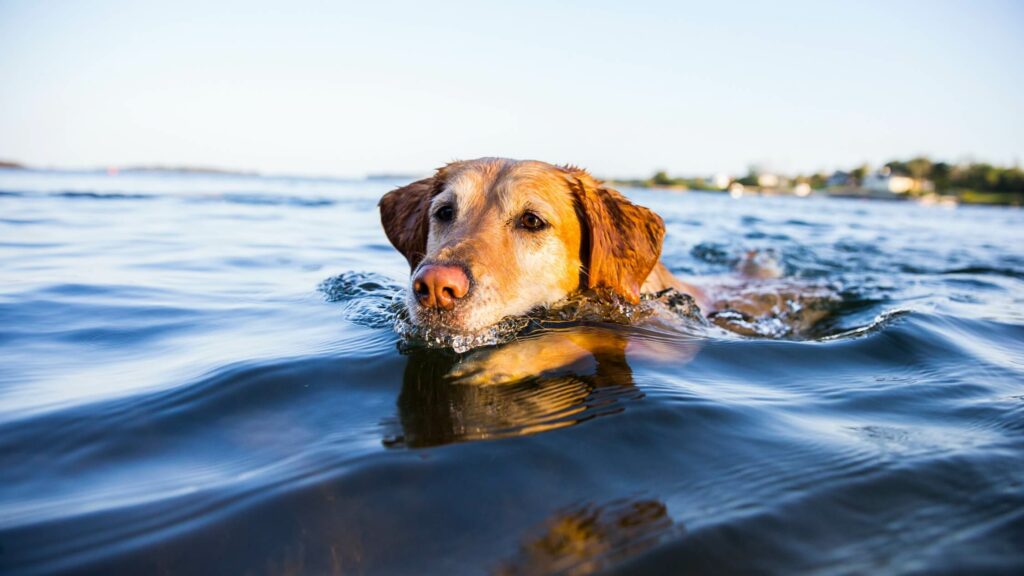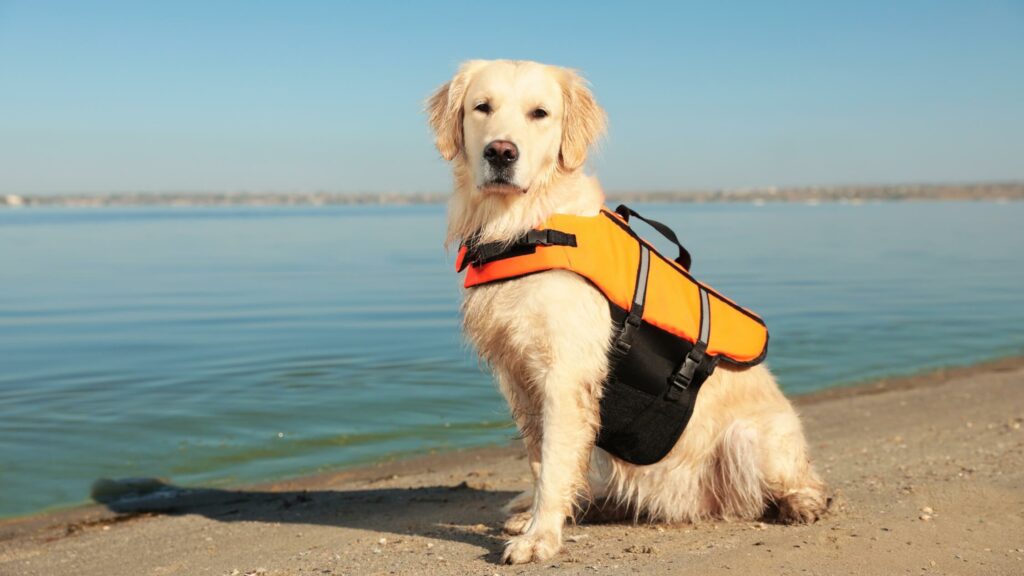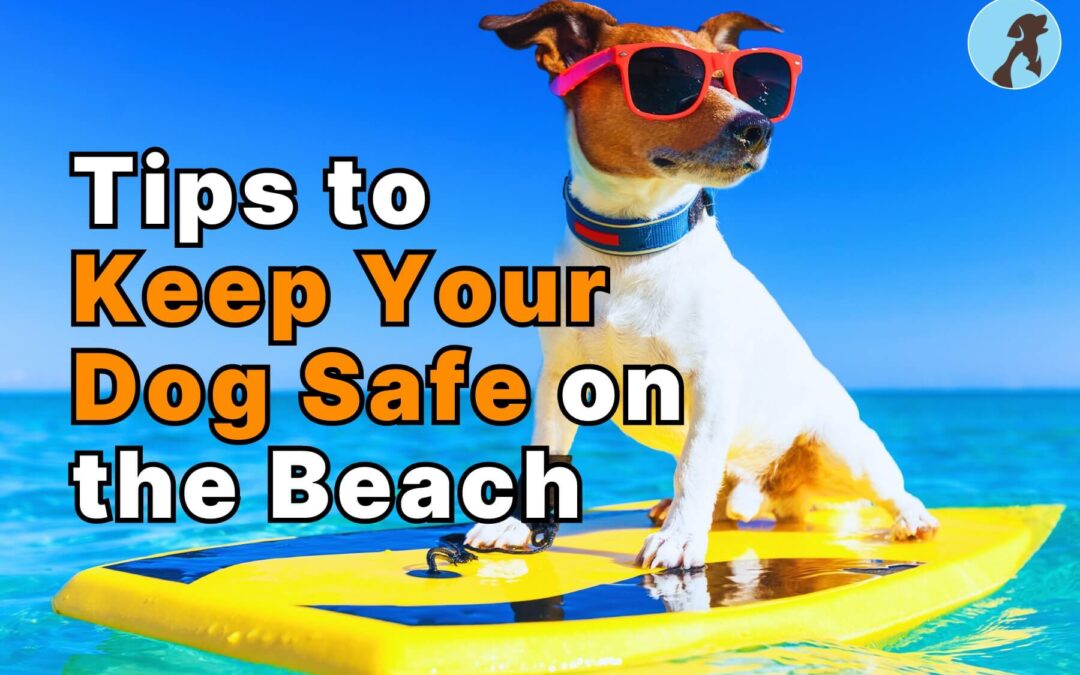Summertime invites both you and your furry friend to enjoy the sun and surf together. Beach vacations offer ample chances to lounge on sandy shores, frolic in the waves, and soak up the sun alongside your dog. Make the most of your beach getaway with these essential tips for bringing your dog along. Remember to pack plenty of fresh water and shade for your dog, and always check local regulations to ensure a dog-friendly beach experience.
Tips to Keep Your Dog Safe on the Beach
Protection from the Sun
Shield your dog from harmful UV rays by providing ample shade, especially during peak sunlight hours. Use pet-safe sunscreen on exposed areas, such as the nose and ears, to prevent sunburn. Remember to keep your dog hydrated as well, as excessive heat can lead to dehydration.
Food Scraps Are Not to Be Eaten by Dogs
Prevent gastrointestinal upset and potential toxicity by diligently keeping your dog away from food scraps left on the beach. Many human foods, even in small quantities, can be harmful to dogs, so vigilance is key to their safety.
Keep your Dog from Drinking Saline Water
Dogs may be tempted to drink seawater, which can lead to dehydration and salt poisoning. Always provide fresh water in a shaded area for your dog to drink throughout your beach visit. Encourage them to drink from their own supply to avoid the risks associated with saline water consumption.

Keep Monitoring Your Pet
Stay attentive to your dog’s behavior and physical condition while at the beach. Look out for signs of heat stress, exhaustion, or discomfort. Regularly check their paws for cuts, burns from hot sand, or irritation from debris.
Supervise Your Dog’s Swimming Activity
If your dog enjoys swimming, supervise them closely to ensure their safety. Not all dogs are strong swimmers, and even those that are can become fatigued or disoriented in unfamiliar water. Be prepared to assist or intervene if needed.
Watch Your Pet’s Paws
Protect your dog’s paws from potential injuries caused by hot sand, sharp shells, or broken glass commonly found on beaches. Consider using paw protectors or rinsing their paws with fresh water after beach outings to remove any irritants.
Don’t Force Them to Swim
Respect your dog’s comfort level in the water. Some dogs may not enjoy swimming or may be hesitant in unfamiliar environments. Avoid forcing them into the water and allow them to explore and interact with the ocean at their own pace.
Take a Break
Provide opportunities for your dog to rest and cool down in the shade. Bring along a comfortable mat or towel where they can relax and recharge away from direct sunlight and activity. Offer them fresh water frequently to prevent dehydration.

Dog in Life Jacket
Equip your dog with a brightly colored life jacket that offers buoyancy and visibility while they enjoy water activities. This ensures they remain safe and easily identifiable in case they need assistance while swimming or playing in deeper waters.
Make Your Pet Wear a Life Vest
Ensure your dog’s safety during water activities by fitting them with a buoyant life vest designed for their size and weight. A properly fitted life vest provides added flotation and visibility, making it easier to locate and assist your dog in the water if necessary.

Conclusion
Taking your dog to the beach can be a delightful experience for both you and your furry friend. By following essential safety tips, you can ensure your dog stays protected from potential hazards, remains comfortable, and enjoys the beach to the fullest. With proper preparation and vigilance, you can create lasting, positive memories of beach outings with your beloved pet.
FAQs
Are there specific times that are safer for taking my dog to the beach?
Early mornings or late afternoons are ideal, as the temperatures are cooler and the sun is less intense, reducing the risk of heat-related issues and sunburn.
How can I protect my dog’s paws from hot sand?
You can protect your dog’s paws by providing a shaded area, using dog booties, or limiting their exposure to hot sand. Check the sand temperature before allowing your dog to walk on it.
What are the signs that my dog might be experiencing sunburn or heatstroke?
Signs of sunburn include red, inflamed skin, especially on the nose, ears, and belly. Heatstroke symptoms include excessive panting, drooling, lethargy, vomiting, and collapse. Seek veterinary attention if these symptoms occur.
Is it necessary to bring fresh water for my dog to the beach?
Yes, always bring fresh water to keep your dog hydrated. Drinking salt water can lead to dehydration and other health issues, so it’s crucial to provide ample fresh water and encourage your dog to drink it regularly.

